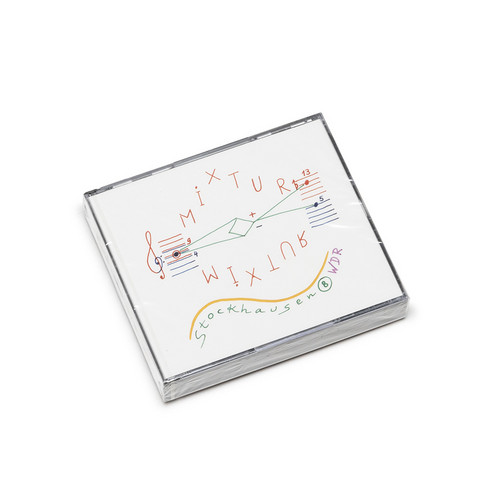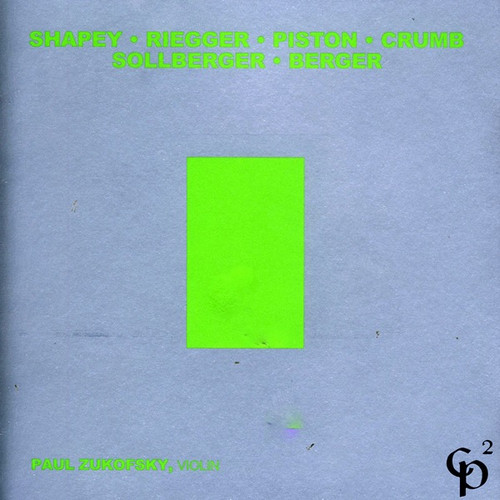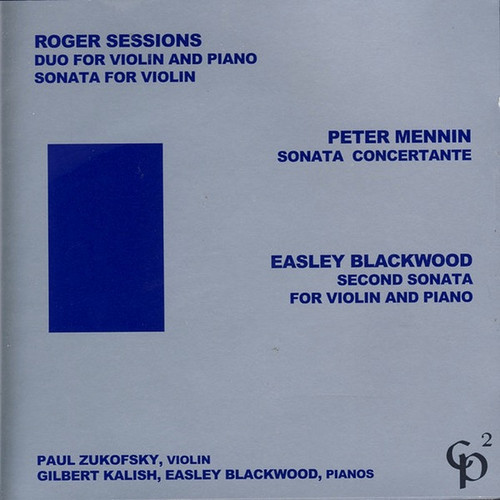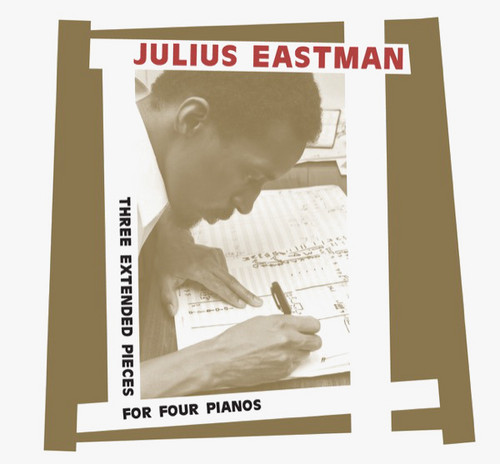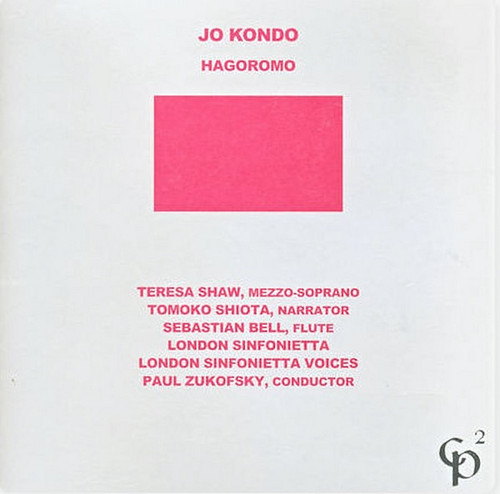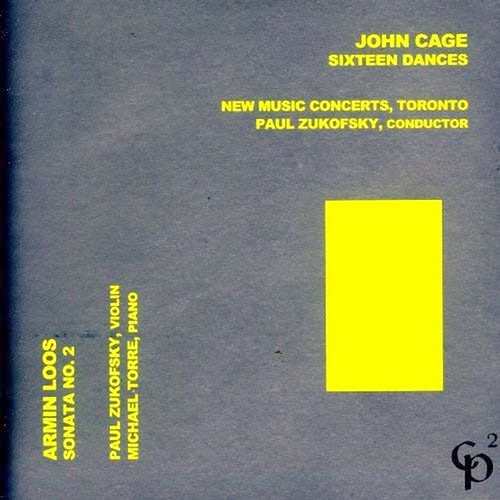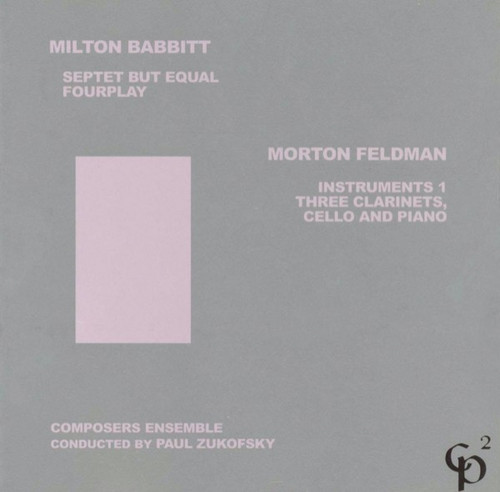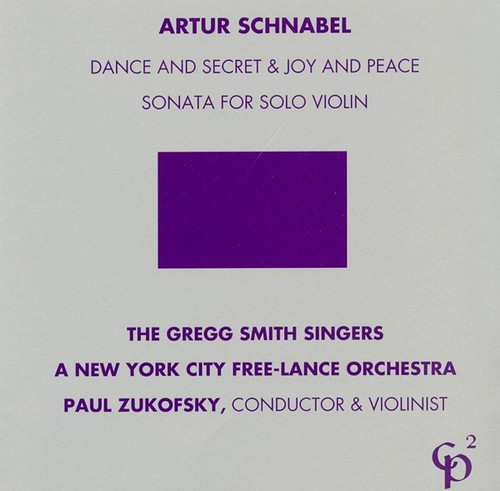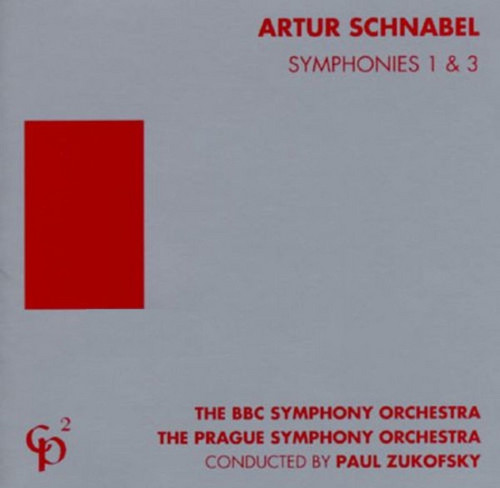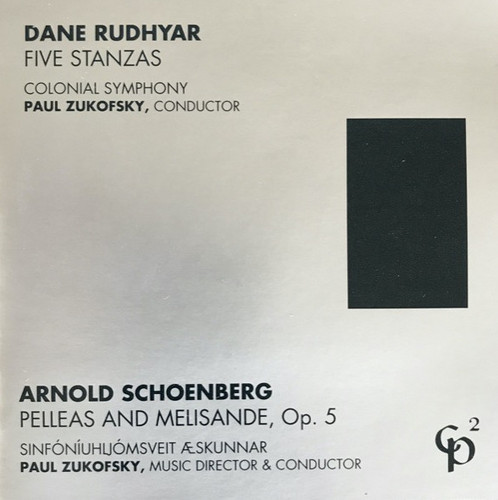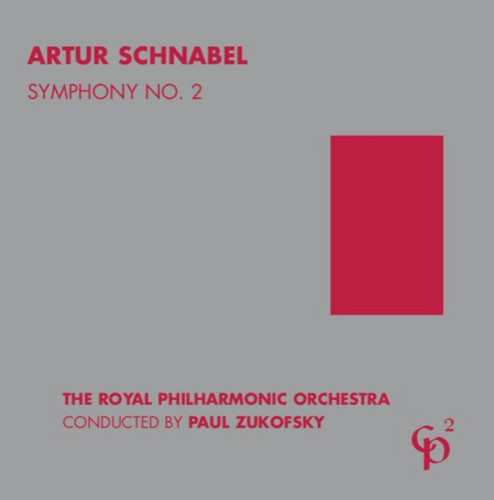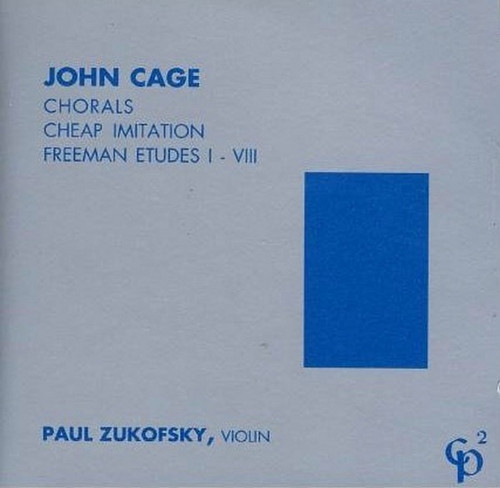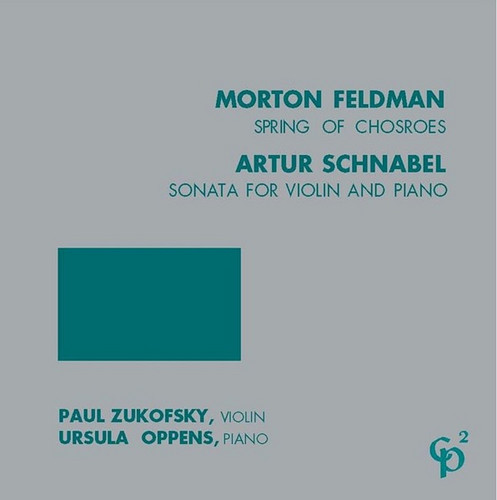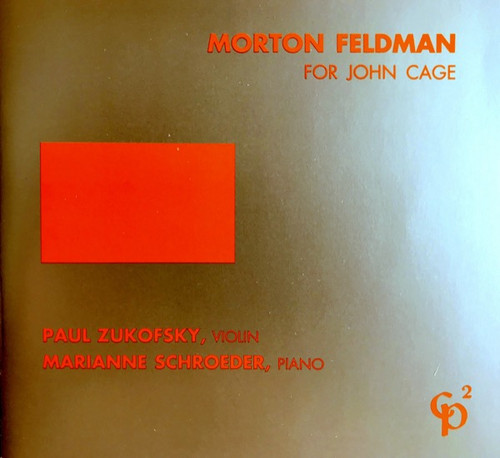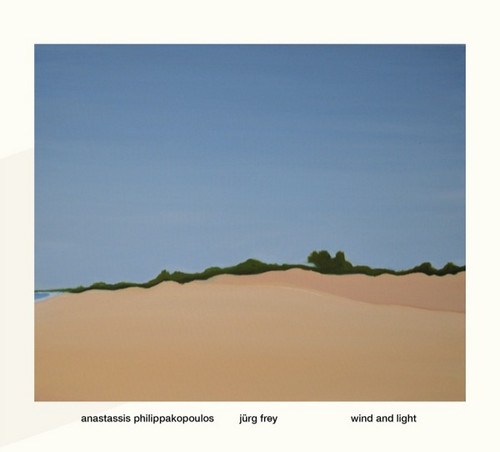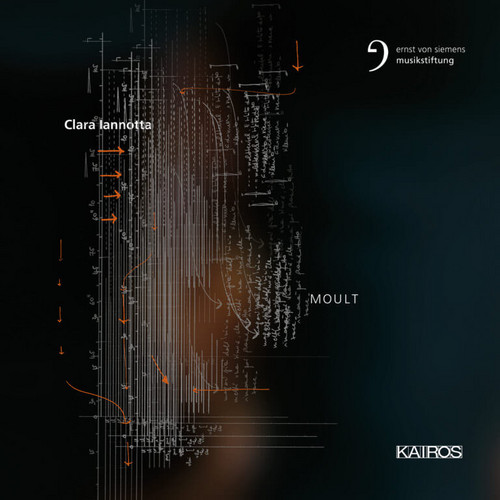Mixtur
*2022 Stock.* In short, some of the most breathtaking, intrepidly advanced electronic music ever recorded. A truly precious survey of a lone, pioneering voice in electronic music. Cardboard slipcase housing a CD jewel with 104-page booklet in German and English. Karlheinz Stockhausen – “Mixtur” (1964) is one of the earliest compositions for orchestra with live electronics, and is amongst the first compositions using live-electronic techniques generally. "Orchestral sounds transform into electron…
Momente
Momente (Moments), written between 1962 and 1969, was Stockhausen's first piece composed on principles of modular transposability, and his first musical form to be determined from categories of sensation or perception rather than by numerical units of musical terminology. Comes with a 72-page 4-color big size booklet in German and English, plus a separate 36-page 2-color book with complete sung texts. "Momente for soprano solo, four chorus groups and thirteen instrumentalists” is dominated by th…
String Quartets 1 & 4, Sonata for Cello
** 2021 Stock ** CP² Recordings presents Artur Schnabel: String Quartets 1 & 4; Sonata for Cello. Performed by The Whitman String Quartet, A Freelance String Quartet, Joel Krosnick, Cello. All recordings were made at the Clinton Recording Studios, Inc., Studio A, in New York City. Produced and engineered by Paul Zinman. Edited, mixed and mastered by Paul Zinman at SoundByte Productions, Inc., NYC. All edit choices: Paul Zukofsky. Pre and Post-production supervision: Paul Zukofsky.
Shapey - Riegger - Piston - Crumb - Sollberger - Berger
** 2021 Stock ** CP² Recordings presents Shapey - Riegger - Piston - Crumb - Sollberger - Berger. Ralph Shapey: (1921-2002) Evocation For Violin, Piano, And Percussion; with Raymond Desroches, percussion; Publisher: Theodore Presser Co. Wallingford Riegger: (1885-1961) Sonatina; Publisher: E. B. Marks Music Corporation. Walter Piston: (1894-1976) Sonatina; Publisher: Boosey and Hawkes, Inc. George Crumb: (1929-) Night Music Ii; Publisher: C.F. Peters, Inc. Harvey Sollberger: (1938-) Solos; with …
Duo for Violin and Piano, Sonata for Violin / Sonata Concertante / Second Sonata
** 2021 Stock ** CP² Recordings presents Roger Sessions: Duo for Violin and Piano, Sonata for Violin; Peter Mennin: Sonata Concertante; Easley Blackwood: Second Sonata. Performed by Paul Zukofsky, violin; Gilbert Kalish, Easley Blackwood, pianos. The Sessions Duo for Violin and Piano and the Mennin Sonata Concertante were both recorded at Paul Hall, The Juilliard School, NY in 1971. They were engineered by Horace W. Grenell and originally released as part of the Desto set "Music for a 20th Centu…
Three Extended Pieces for Four Pianos
Building on the back of their stunning release of Ensemble 0’s rendering of "Femenine" issued earlier this year, Sub Rosa returns with "Three Extended Pieces for Four Pianos", featuring brand new recording of three seminal works composed by Julius Eastman between 1970 and 1980 - "Evil N*gger" (1979) "Gay Guerilla" (1980) and "Crazy N*gger" (1980) - realised by Nicolas Horvath, Melaine Dalibert, Stephane Ginsburgh, and Wilhem Latchoumia.
Released as a beautiful double CD with brand new liner not…
Hagoromo
** 2021 Stock ** CP² Recordings presents Jo Kondo: Hagoromo. Performed By Teresa Shaw, Mezzo-soprano; Tomoko Shiota, Narrator; London Sinfonietta; Paul Zukofsky, Conductor. Written under commission from the Maggio Musicale Fiorentino, and premiered there June 13, 1994. Publisher: University of York Music Press (U.K.) Recorded March 25, 2002 at Abbey Road Studio 2, London, England. Produced and engineered by Paul Zinman. Assistant engineers: Roland Heap, Chris Clark. Edited, mixed and mastered by…
16 Dances / Sonata No.2 for Violin and Piano
** 2021 Stock ** CP² Recordings presents John Cage: 16 Dances; Armin Loos: Sonata No.2 for Violin and Piano. Performed by New Music Concerts, Paul Zukofsky, Conductor; Paul Zukofsky, Violin, Michael Torre, Piano. This recording was originally released as an LP (CP2/15) and was a co-production with Canadian Broadcasting Corporation / Sociètè Radio-Canada and New Music Concerts, Toronto. The original release was supported in part by public funds from the New York State Council on the Arts. The g…
Septet But Equal & Fourplay / Instruments 1 & Three Clarinets, Cello and Piano
** 2021 Stock ** CP² Recordings presents Milton Babbitt: Septet But Equal; Fourplay; Morton Feldman: Instruments 1; Three Clarinets, Cello and Piano. Perfomed by b, conductor; Composers Ensemble. All works recorded at Studio 2, BBC Maida Vale, Delaware Rd., London, W9, July 20-21, 1997.
Dance and Secret & Joy and Peace
** 2021 Stock ** CP² Recordings presents Artur Schnabel: Dance and Secret & Joy and Peace; Sonata for Solo Violin performed by Paul Zukofsky, Conductor and Violinist; The Gregg Smith Singers. Dance and Secret & Joy and Peace by Artur Schnabel were recorded February, 1993 at BMG (originally RCA) Studio A, New York City. Producer: Joanna Nickrenz. Sound Engineer: Jay Newland. Montage: PZ, with Elite Recordings, New York City. Mastering: Soundbyte Productions, New York City. Sonata for Solo Violin…
Symphonies 1 & 3
** 2021 Stock ** CP² Recordings presents Artur Schnabel: Symphonies 1 & 3. Performed by The Bbc Symphony Orchestra; The Prague Symphony Orchestra; Paul Zukofsky, Conductor. Symphony No. 1 by Artur Schnabel was recorded April 26-28, 1994 at Maida Vale, BBC Studios, London, England. Producer: Joanna Nickrenz. Engineering: Neil Pemberton, with Chris Muir, and Graham Petrie-Brown, Assistants. Montage: PZ, with Elite Recordings, NYC. Mastering: Soundbyte Productions, NYC. Symphony No. 3 by Artur Schn…
Five Stanzas / Pelleas & Melisande, Op. 5
** 2021 Stock ** CP² Recordings presents Dane Rudhyar: Five Stanzas; Arnold Schoenberg: Pelleas & Melisande, Op. 5 by Colonial Symphony and Sinfóníuhljómsveit Æskunnar; Paul Zukofsky, conductor. Sinfóníuhljómsveit Æskunnar (the Youth Orchestra of Iceland) was founded in 1985, by Paul Zukofsky, and was a continuation of the "Zukofsky Seminars in Orchestral Music" which began in 1977, and were sponsored by the Reykjavik College of Music. The aim of both groups was to provide an opportunity for Ice…
Symphony No. 2
** 2021 Stock ** CP² Recordings presents Symphony No. 2 by Artur Schnabel. Performed by The Royal Philharmonic Orchestra; Paul Zukofsky, conductor. Recorded July 18-20, 1988, at All Saints Church, in Tooting, London, England.
Chorals / Cheap Imitation / Freeman Etudes I-VIII
** 2021 Stock ** CP² Recordings presents John Cage: Chorals / Cheap Imitation / Freeman Etudes I-VIII performed by Paul Zukofsky, violin. The original recording of the Freeman Etudes was supported in part by public funds from the New York State Council on the Arts. The generous support of Betty Freeman is gratefully acknowledged. Recording Engineer (Chorals and Cheap Imitation): Paul Goodman. Recording Engineer (Freeman Etudes): Robert C. Ludwig. Editor: Joanna Nickrenz (Elite Recordings, Inc.…
Spring of Chosroes / Sonata for Violin and Piano
** 2021 Stock ** CP² Recordings presents Morton Feldman: Spring of Chosroes and Artur Schnabel: Sonata for Violin and Piano by Paul Zukofsky, violin; Ursula Oppens, piano. Recorded at the Library of Congress, May 11-12, 1979. Spring of Chosroes is published by Universal Edition, Ltd., and was commissioned by the McKim Fund of the Library of Congress which also assisted with this recording. The Schnabel Sonata for Violin and Piano is published by Boosey and Hawkes, Inc. Recording Engineers: John …
For John Cage
** 2021 Stock ** CP² Recordings presents Morton Feldman: For John Cage by Paul Zukofsky, violin; Marianne Schroeder, piano. This recording was supported in part by public funds from the New York State Council on the Arts.The generous support of Betty Freeman and Paul Sacher is gratefully acknowledged. For John Cage was recorded April 7, 1984 at Sonographic AG, Schlieren, Switzerland. Recording Engineer: W.A. Wettler; Montage: Elite Recordings, NYC; Publisher: Universal Edition, Ltd., London.
Wind and Light
Greek composer Anastassis Philippakopoulos has been a member of the Wandelweiser composers collective since 2003. He pursues his own compositional style to create a new kind of tonal music, deeply associated with his individuality and the surroundings of his life in Athens, a unique blend of stoic minimalism, the warm colors of modern romanticism, and the introspective depth of Zen.
"For many years I have concentrated my attention on modal monophonic melodies. In my pieces I want to bring a bala…
Night Blossoms
'Night Blossoms' is French composer/pianist Melaine Dalibert’s sixth solo album, consisting of new compositions from 2019-2021. Of the six pieces on this album, 'A Rebours', 'Windmill', 'Eolian Scape', and 'Sisters' were written around the same time as most of the pieces for his 2020 album 'Infinite Ascent'. While 'Infinite Ascent' featured his intuitive compositions in a pop style, 'Night Blossoms' features works further developed with his algorithmic approach, which has been his long-term purs…
Moult
At first I found it impossible to organise my thoughts about this disc. I listened in bed to Moult through headphones; it seemed an entirely different beast through speakers. The two pieces in the middle are quieter, and more consistent in their impacts with headphones or not. Listening to them for the fourth or fifth time under the duvet one really begins to perceive the extraordinary subtlety of Clara Iannotta’s schemes. They provide the kind of measured sensory stimulation which is exquisite …
Yeo-Neun
** Small repress, absolutely astounding! ** Anyone encountering the efforts of the cellist, Okkyung Lee, faces an unavoidable truth. She’s an unreckonable force. Few players in the contemporary landscape relinquish themselves so completely to the practice of free improvisation, adapt with such ease without sacrificing the distinctions of self, or exist in the moment so completely, not to mention her awe inspiring technical skill. Her latest LP, Yeo-Neun, issued by Shelter Press, stands as tower…
